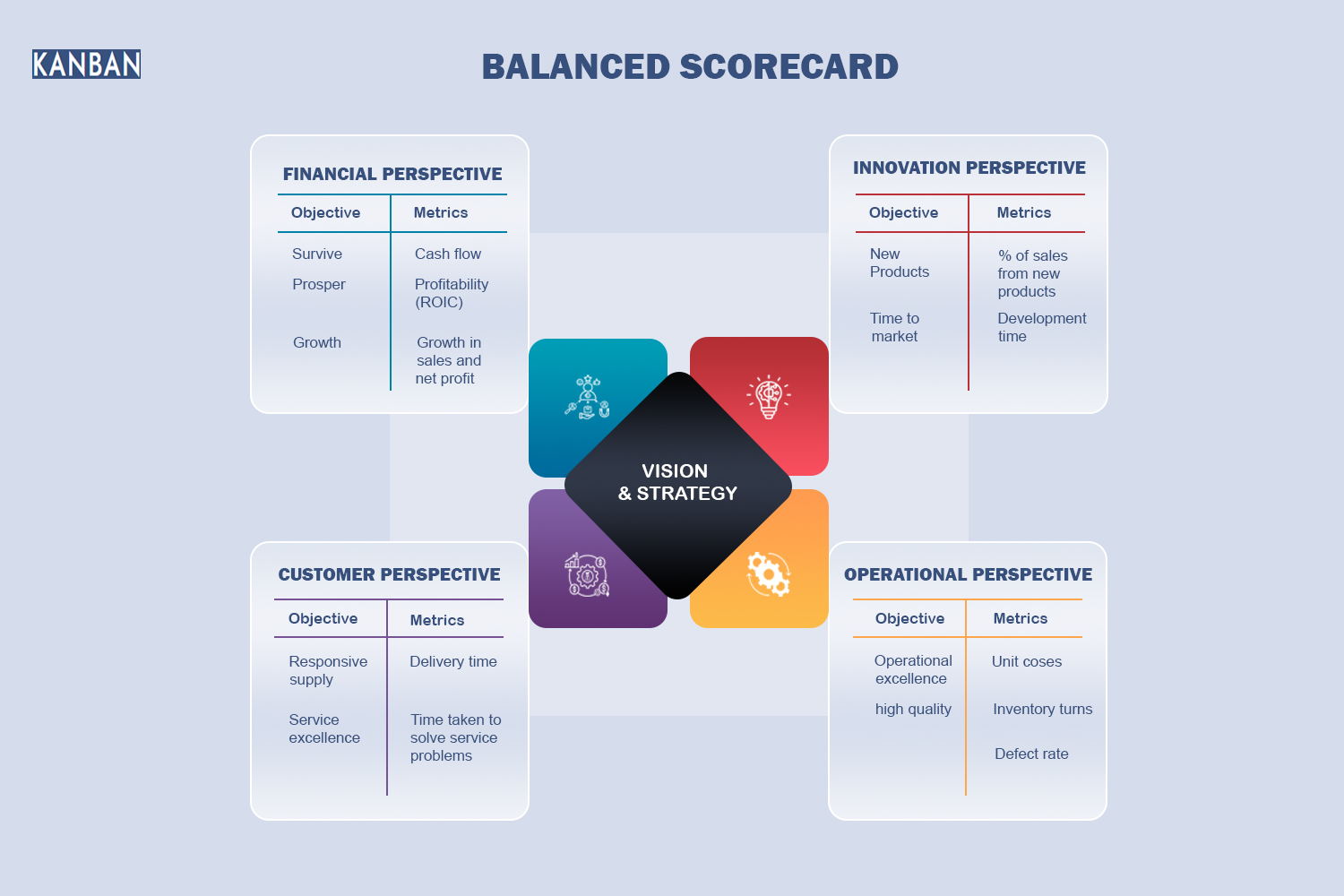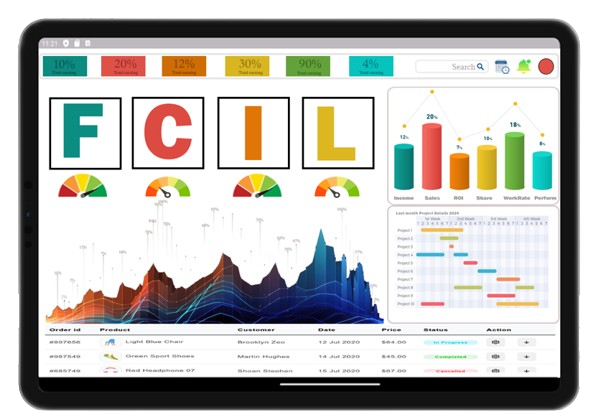The Digital Balanced Scorecard (DBS) system plays a critical role in the modern business landscape by offering comprehensive support for strategy execution, performance management, and decision-making processes. By integrating digital technologies into the traditional Balanced Scorecard framework, organizations can streamline their operations, enhance transparency, and improve alignment with strategic goals.

Enhanced Strategy Alignment
One of the fundamental purposes of the Balanced Scorecard system is to align organizational activities with strategic objectives. A digital version of this system amplifies this alignment through better data integration and real-time monitoring. This enhanced alignment ensures that every department, team, and individual in an organization understands how their activities contribute to the broader corporate goals.
Digital systems provide the ability to visualize this alignment in intuitive dashboards that can be customized for different levels of management. This makes it easier for decision-makers to ensure that their actions are aligned with long-term strategies and objectives. The digital nature allows for automated tracking of Key Performance Indicators (KPIs), reducing the chances of human error, and increasing the overall reliability of the data being used.
Real-Time Performance Monitoring
Traditional Balanced Scorecards rely on periodic reviews, which often means data is outdated by the time it's assessed. In contrast, a digital Balanced Scorecard enables real-time monitoring of performance metrics. This capability is particularly beneficial in dynamic business environments where rapid decision-making is crucial.
Real-time monitoring enables businesses to react swiftly to emerging challenges or opportunities. Instead of waiting for monthly or quarterly reviews, managers and leaders can see up-to-the-minute performance data, allowing for proactive adjustments. The ability to immediately identify deviations from strategic goals and implement corrective actions ensures that the organization stays on track.
Data Integration and Consistency
A major challenge in performance management is consolidating data from various sources into a coherent format. The Digital Balanced Scorecard system solves this problem by integrating data from diverse systems and platforms. This ensures consistency in reporting and eliminates discrepancies that can arise when manually aggregating data.
Data integration is not only more efficient but also helps in providing a more holistic view of the organization’s performance. Whether it’s sales data, customer feedback, financial reports, or operational metrics, a Digital Balanced Scorecard system can gather and present all this information in one centralized platform, promoting better decision-making across the board.
Improved Communication and Collaboration
A Digital Balanced Scorecard system fosters better communication and collaboration within the organization. By offering a centralized platform where KPIs and performance data are accessible to all relevant stakeholders, it promotes transparency and encourages teamwork. When everyone is on the same page regarding performance metrics, it becomes easier to work together toward common goals.
The system allows team members to share insights, discuss strategies, and collaborate on initiatives aimed at improving performance. Furthermore, the transparency created by such systems encourages accountability, as everyone can see how individual and team performance contributes to the overall organizational objectives.
Predictive Analytics and Forecasting
One of the key advantages of a Digital Balanced Scorecard system is its ability to leverage predictive analytics. By analyzing historical data and identifying patterns, the system can forecast future trends and performance outcomes. This feature helps organizations to not only monitor current performance but also anticipate future challenges or opportunities.
Predictive analytics offer a strategic advantage by enabling managers to make data-driven decisions. Instead of reacting to past performance, organizations can proactively plan for future scenarios, allocate resources more effectively, and mitigate potential risks. This forward-looking approach ensures that the organization is always prepared to adapt to changing market conditions.
Automation and Efficiency Gains
The digital transformation of the Balanced Scorecard system brings with it a host of automation benefits. Automating the tracking, reporting, and analysis of KPIs significantly reduces the time and effort required to manage these processes. This frees up managers and employees to focus on more strategic tasks, such as innovation and growth initiatives.
By automating routine processes, the system also reduces the likelihood of human error, which can lead to inaccurate data and poor decision-making. Automation ensures that data is collected, processed, and reported consistently, leading to more accurate performance assessments and greater efficiency in overall business operations.
Personalized Reporting and Insights
A Digital Balanced Scorecard system allows for the customization of reports and dashboards based on the specific needs of different stakeholders. Executives might require a high-level view of strategic outcomes, while managers and frontline employees might need more granular data related to day-to-day operations. The digital system can cater to these varying needs, ensuring that everyone gets the information that’s most relevant to their role.
This personalization extends to insights as well. Advanced analytics capabilities can provide tailored recommendations for improving performance based on individual or team metrics. Such insights empower employees at all levels to take ownership of their performance and contribute to the organization’s success.
Greater Agility and Adaptability
The modern business environment is characterized by rapid changes, whether due to technological advancements, shifting market conditions, or evolving customer expectations. A Digital Balanced Scorecard system enables organizations to be more agile and adaptable in the face of such changes.
By continuously monitoring KPIs and providing real-time feedback, the system ensures that businesses can quickly pivot their strategies when necessary. This adaptability is crucial for staying competitive in today’s fast-paced markets. Moreover, the flexibility of digital systems allows for easy modification of KPIs or strategic objectives as organizational needs evolve.
Enhanced Employee Engagement and Motivation
A well-implemented Digital Balanced Scorecard system can have a positive impact on employee engagement and motivation. When employees have clear visibility into how their work contributes to the organization's success, they are more likely to feel engaged and motivated. The system provides a sense of purpose by connecting individual performance with larger strategic goals.
Furthermore, the transparency and feedback provided by the system allow employees to monitor their own progress in real-time. This fosters a culture of continuous improvement, where employees are encouraged to take initiative and improve their performance proactively.
Cost-Effectiveness and Scalability
Finally, the Digital Balanced Scorecard system offers significant cost-effectiveness and scalability benefits. By automating many of the manual processes involved in performance tracking and reporting, the system reduces operational costs. Additionally, because digital solutions are scalable, they can easily grow with the organization, making them suitable for both small businesses and large enterprises.
Whether an organization is expanding into new markets, adding new product lines, or increasing its workforce, a digital system can accommodate these changes without significant additional costs. This scalability ensures that the system remains valuable over the long term, providing continuous support as the organization grows.
Why Digital Balanced Scorecard System
What is a Digital Balanced Scorecard?
A Digital Balanced Scorecard (DBS) is a digital platform that automates the traditional Balanced Scorecard framework. It tracks performance across key areas such as financial metrics, internal processes, customer satisfaction, and learning and growth, allowing businesses to align activities with strategic objectives in real time.

How does a Digital Balanced Scorecard differ from a traditional one?
Unlike a traditional Balanced Scorecard, which relies on manual updates and periodic reviews, the digital version automates the process, offers real-time tracking, integrates data from multiple systems, and includes customizable dashboards for better decision-making and strategy execution.
What are the key benefits of using a Digital Balanced Scorecard system?
The key benefits include real-time performance tracking, improved data integration, enhanced strategic alignment, predictive analytics, automation of routine processes, and the ability to customize reports and dashboards for various stakeholders.
Can the system track both financial and non-financial metrics?
Yes, a Digital Balanced Scorecard tracks both financial metrics (such as revenue and profitability) and non-financial metrics (such as customer satisfaction and employee engagement) to provide a comprehensive view of organizational performance.
How does a Digital Balanced Scorecard improve decision-making?
By providing real-time data and insights, the Digital Balanced Scorecard helps decision-makers monitor performance, identify trends, and react swiftly to challenges or opportunities, enabling data-driven decisions that align with strategic goals.
Is the Digital Balanced Scorecard customizable for different industries?
Yes, the system is highly customizable and can be adapted to the unique needs of different industries. Its KPIs and dashboards can be tailored to reflect specific performance metrics relevant to the sector in which the organization operates.
How does the system enhance strategic alignment within an organization?
The Digital Balanced Scorecard links individual and departmental KPIs to overall organizational goals, ensuring that all activities contribute to the company's strategy. This alignment helps the organization stay focused on long-term success.
Does a Digital Balanced Scorecard system require special technical skills to operate?
No, most Digital Balanced Scorecard systems are user-friendly, featuring intuitive interfaces that allow users to interact with dashboards and reports without the need for specialized technical knowledge.
How does the system integrate data from other business systems?
The system includes connectors or APIs that allow it to integrate with other business platforms, such as CRM, ERP, and financial management systems, ensuring consistent data reporting and centralized performance tracking.
How frequently can performance data be updated in a Digital Balanced Scorecard system?
Performance data can be updated in real-time or at specific intervals, depending on organizational preferences. This allows decision-makers to access the most recent and accurate data whenever needed.
How does a Digital Balanced Scorecard system improve employee engagement?
The system fosters transparency and accountability by showing employees how their contributions impact organizational goals. Real-time feedback and visibility into individual performance increase engagement and motivation to achieve targets.
What kind of reporting capabilities does a Digital Balanced Scorecard system offer?
The system provides dynamic reporting options, including customizable dashboards, visual analytics, and automated reports. Reports can be tailored to meet the needs of different stakeholders, from high-level overviews for executives to detailed metrics for managers.
Can a Digital Balanced Scorecard system be used by small businesses?
Yes, the system is scalable and suitable for businesses of all sizes. Small businesses can benefit from the automation and efficiency gains provided by the Digital Balanced Scorecard system, helping them manage performance more effectively.
How does a Digital Balanced Scorecard system support continuous improvement?
The system allows organizations to track performance in real-time, identify gaps, and implement corrective actions. By providing predictive insights, it helps businesses refine their strategies and continuously improve processes and outcomes.
Is the Digital Balanced Scorecard system secure for handling sensitive data?
Yes, most Digital Balanced Scorecard systems include robust security measures, such as encryption and role-based access control, to protect sensitive performance data from unauthorized access or breaches.